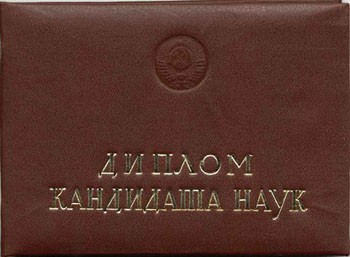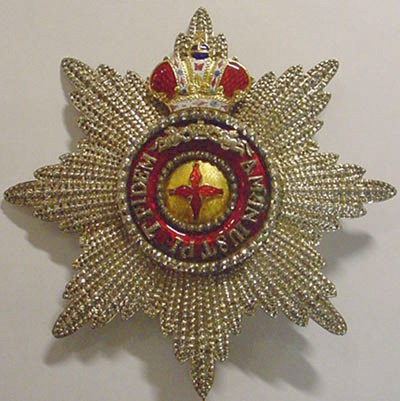|
Vasily Perfilyev
Vasily Vlasyevich Perfilyev (January 25, 1865 – June 25, 1914) was a Russian Empire state and public figure, the first governor of the Kamchatka Oblast (July 22, 1909 – June 18, 1912). The son of a sergeant of the Trans-Baikal Cossack army, a direct descendant of the founder of Bratsk ostrog Maksim Perfilyev. In 1888 he graduated from the Imperial Kharkov University, receiving the degree of candidate. After being drafted into the army, he was sent to St. Petersburg and was trained at the Imperial Military Medical Academy with the rank of doctor. From 1893 he served in Khabarovsk, first as an infantry doctor, then as a doctor in a military district. In 1897 he was transferred to civil service, was the clerk of the office of the Amur Governor-General, temporarily served as ruler of the office. Simultaneously, from 1894 to 1902, the director of the Nikolaev Public Library in Khabarovsk. In 1904 – 1906 special assignments official at the Amur Governor-General. In 1906 – ... [...More Info...] [...Related Items...] OR: [Wikipedia] [Google] [Baidu] |
Moscow Governorate
Moscow Governorate (russian: Московская губерния; pre-reform Russian: ), or the Government of Moscow, was an administrative division (a '' guberniya'') of the Tsardom of Russia, the Russian Empire, and the Russian SFSR, which existed in 1708–1929. Administrative division Moscow Governorate consisted of 13 uyezds (their administrative centres in brackets): * Bogorodsky Uyezd ( Bogorodsk/Noginsk) * Bronnitsky Uyezd (Bronnitsy) * Vereysky Uyezd (Vereya) * Volokolamsky Uyezd (Volokolamsk) * Dmitrovsky Uyezd (Dmitrov) * Zvenigorodsky Uyezd (Zvenigorod) * Klinsky Uyezd (Klin) * Kolomensky Uyezd (Kolomna) * Mozhaysky Uyezd (Mozhaysk) * Moskovsky Uyezd (Moscow) * Podolsky Uyezd (Podolsk) * Ruzsky Uyezd ( Ruza) * Serpukhovsky Uyezd (Serpukhov) History Moscow Governorate, together with seven other governorates, was established on , 1708, by Tsar Peter the Great's edict. [...More Info...] [...Related Items...] OR: [Wikipedia] [Google] [Baidu] |
Russian Empire
The Russian Empire was an empire and the final period of the Russian monarchy from 1721 to 1917, ruling across large parts of Eurasia. It succeeded the Tsardom of Russia following the Treaty of Nystad, which ended the Great Northern War. The rise of the Russian Empire coincided with the decline of neighbouring rival powers: the Swedish Empire, the Polish–Lithuanian Commonwealth, Qajar Iran, the Ottoman Empire, and Qing China. It also held colonies in North America between 1799 and 1867. Covering an area of approximately , it remains the third-largest empire in history, surpassed only by the British Empire and the Mongol Empire; it ruled over a population of 125.6 million people per the 1897 Russian census, which was the only census carried out during the entire imperial period. Owing to its geographic extent across three continents at its peak, it featured great ethnic, linguistic, religious, and economic diversity. From the 10th–17th centuries, the land ... [...More Info...] [...Related Items...] OR: [Wikipedia] [Google] [Baidu] |
Candidate Of Sciences
Candidate of Sciences (russian: кандидат наук, translit=kandidat nauk) is the first of two doctoral level scientific degrees in Russia and the Commonwealth of Independent States. It is formally classified as UNESCO's ISCED level 8, "doctoral or equivalent". It may be recognized as Doctor of Philosophy, usually in natural sciences, by scientific institutions in other countries. Former Soviet countries also have a more advanced degree, Doctor of Sciences. Overview The degree was first introduced in the USSR on 13 January 1934 by a decision of the Council of People's Commissars of the USSR, all previous degrees, ranks and titles having been abolished immediately after the October Revolution in 1917. Academic distinctions and ranks were viewed as survivals of capitalist inequality and hence were to be permanently eliminated. The original decree also recognized some degrees earned prior to 1917 in Tsarist Russia and elsewhere. To attain the Candidate of Sciences de ... [...More Info...] [...Related Items...] OR: [Wikipedia] [Google] [Baidu] |
Order Of Saint Vladimir
The Imperial Order of Saint Prince Vladimir (russian: орден Святого Владимира) was an Imperial Russian order established on by Empress Catherine II in memory of the deeds of Saint Vladimir, the Grand Prince and the Baptizer of the Kievan Rus'. Grades The order had four degrees and was awarded for continuous civil and military service. People who had been awarded with the St. Vladimir Order for military merits bore it with a special fold on the ribbon – "with a bow". There was a certain hierarchy of Russian Orders. According to this, the First Class Order of Saint Vladimir was the second one—the first was the Saint George Order—by its significance. According to Russian laws on nobility, people who were awarded the Order of Saint Vladimir had the rights of hereditary nobility until the Emperor's decree of 1900 was issued. After this, only three first classes of the order gave such a right, the last one granting only personal nobility. Today, G ... [...More Info...] [...Related Items...] OR: [Wikipedia] [Google] [Baidu] |
Order Of Saint Anna
The Imperial Order of Saint Anna (russian: Орден Святой Анны; also "Order of Saint Anne" or "Order of Saint Ann") was a Holstein ducal and then Russian imperial order of chivalry. It was established by Karl Friedrich, Duke of Holstein-Gottorp, on 14 February 1735, in honour of his wife Anna Petrovna, daughter of Peter the Great of Russia. Originally, the Order of Saint Anna was a dynastic order of knighthood; but between 1797 and 1917 it had dual status as a dynastic order and as a state order. The Order of St. Anna continued to be awarded after the revolution by Grand Duke Kirill Vladimirovich, Grand Duke Vladimir Kirillovich, and Grand Duchess Maria Vladimirovna. Today, the Russian Imperial Order of St. Anna, awarded by Grand Duchess Maria Vladimirovna is recognized as an order of chivalry by the privately operated ICOC as a continuation of the pre-Revolutionary order, and has been approved for wear with military uniform by the Russian Federation, but not by s ... [...More Info...] [...Related Items...] OR: [Wikipedia] [Google] [Baidu] |
Order Of Saint Stanislaus (House Of Romanov)
pl, Order św. Stanisława , image = , caption = , image2 = , caption2 = Ribbon of the order , awarded_by = Head of the House of Romanov , type = Dynastic order of knighthood , motto = Praemiando incitat("Rewarding encourages") , day = , eligibility = , for = Military and civil merits , status = active , head_title = Sovereign , head = , head2_title = , head2 = , chancellor = , commander = , grades = Knight Grand CrossKnight CommanderKnight , former_grades = , date = 1831 – 1918 (National Order)1918 - Present (house order) , house = House of Romanov , religion = Russian Orthodox , higher = Order of Saint Anastasia , lower = Order of Saint Michael the Archangel , ribbon = Bright red with a white stripe on either side and a thinner white stripe on the end of either stri ... [...More Info...] [...Related Items...] OR: [Wikipedia] [Google] [Baidu] |
Kamchatka Oblast (Russian Empire)
Kamchatka Oblast was the administrative-territorial unit of the Russian Empire. History For the first time the Kamchatka Oblast as part of the Irkutsk governorate was formed on August 23, 1803. The center of the Oblast was appointed Verkhne-Kamchatsk, on April 21, 1812, the administration of the region was transferred to Petropavlovsk harbor. In 1822 the Oblast was abolished. Instead, in the Irkutsk Governorate, the Kamchatka Maritime Administration was established with its center in Petropavlovsk. In 1849, the Kamchatka Oblast was re-established from the Kamchatka Maritime Administration and the Gizhiginsky District of the Okhotsk Maritime Administration. However, already in 1856, the Kamchatka Oblast was abolished, and its territory became part of the Primorskaya Oblast. By the law of June 30, 1909, the Kamchatka Oblast was created for the third time. The Oblast included Petropavlovsk, Okhotsk, Gizhiginsky, Anadyr Uyezds and the Commander Islands, separated from the Primor ... [...More Info...] [...Related Items...] OR: [Wikipedia] [Google] [Baidu] |
Maksim Perfilyev
Maksim Perfilyev (russian: Максим Перфильев (b. 1580 – d. 1638) was a Cossack explorer of Eastern Siberia and the first Russian to reach Transbaikalia. He was renowned for his diplomatic skills in negotiations with Tunguses, Mongols and Chinese. In 1618–19 Perfilyev was co-founder of Yeniseysky ostrog, the first Russian fort at the central part of the great Siberian river Yenisey, a major starting point for further expeditions eastward. From 1618–27 he made several journeys on the Angara and Ilim rivers, and built several new ostrogs. In 1631 he founded Bratsky ostrog (modern Bratsk). In 1639–40 he sailed up the Vitim River as far as the Tsipa thereby becoming the first Russian to enter Transbaikalia, then known as Dauria. Perfilyev gave his name to the village of Maksimovschina, where on the banks of the Irkut River were his hunting lands. Maksimikha Bay on Lake Baikal (part of the larger Barguzin Bay) and Cape Maksimin in that bay, as well as t ... [...More Info...] [...Related Items...] OR: [Wikipedia] [Google] [Baidu] |
Pavel Unterberger
Paul Simon Unterberger (russian: Па́вел Фёдорович У́нтербе́ргер, tr. ; August 21, 1842, Simbirsk, Russian Empire – February 12, 1921, Remplin, Weimar Republic) was a Russo-German military and state leader, military governor of the Primorskaya Oblast (1888–1897), Nizhny Novgorod Governor (1897–1905), Military ataman of the Ussuri Cossack Host, Amur Governor-General (1905–1910), General Engineer (December 6, 1906). His other names are Pavel Fridrikhovich, Pavel-Simon and Simon Fridrikhovich Unterberger. Biography Paul was born on August 21, 1842 to Heinrich Friedrich Simon Unterberger and Marie Rudolph. His father, the son of the carriage master from Riga, was one of the founders of the veterinary business in Russia, for which he received a noble title. His family were Austrian Protestants from Salzburg which for religious reasons moved to Prussia in the early 18th Century. His grandfather Simon Thomas Unterberger moved to Riga during the ea ... [...More Info...] [...Related Items...] OR: [Wikipedia] [Google] [Baidu] |
1865 Births
Events January–March * January 4 – The New York Stock Exchange opens its first permanent headquarters at 10-12 Broad near Wall Street, in New York City. * January 13 – American Civil War : Second Battle of Fort Fisher: United States forces launch a major amphibious assault against the last seaport held by the Confederates, Fort Fisher, North Carolina. * January 15 – American Civil War: United States forces capture Fort Fisher. * January 31 ** The Thirteenth Amendment to the United States Constitution (conditional prohibition of slavery and involuntary servitude) passes narrowly, in the House of Representatives. ** American Civil War: Confederate General Robert E. Lee becomes general-in-chief. * February ** American Civil War: Columbia, South Carolina burns, as Confederate forces flee from advancing Union forces. * February 3 – American Civil War : Hampton Roads Conference: Union and Confederate leaders discuss peace terms. * February 8 ... [...More Info...] [...Related Items...] OR: [Wikipedia] [Google] [Baidu] |
1914 Deaths
This year saw the beginning of what became known as World War I, after Archduke Franz Ferdinand of Austria, heir to the Austrian throne was Assassination of Archduke Franz Ferdinand, assassinated by Serbian nationalist Gavrilo Princip. It also saw the first airline to provide scheduled regular commercial passenger services with heavier-than-air aircraft, with the St. Petersburg–Tampa Airboat Line. Events January * January 1 – The St. Petersburg–Tampa Airboat Line in the United States starts services between St. Petersburg, Florida, St. Petersburg and Tampa, Florida, becoming the first airline to provide scheduled regular commercial passenger services with heavier-than-air aircraft, with Tony Jannus (the first federally-licensed pilot) conveying passengers in a Benoist XIV flying boat. Abram C. Pheil, mayor of St. Petersburg, is the first airline passenger, and over 3,000 people witness the first departure. * January 11 – The Sakurajima volcano in Japan b ... [...More Info...] [...Related Items...] OR: [Wikipedia] [Google] [Baidu] |








